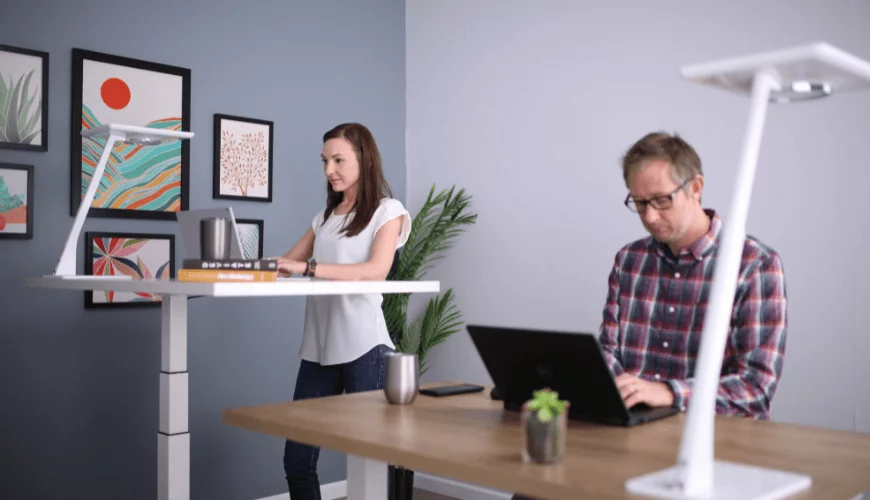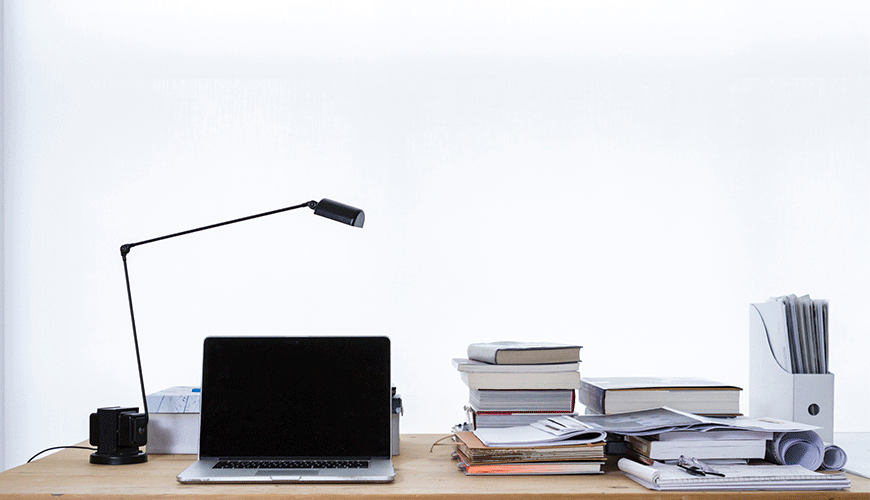Given the stresses of the modern workplace, it can be easy for people to become totally absorbed with their work, rendering self-care an afterthought. Supporting staff who are regularly working from home or have a sedentary technical job is especially important; HSE statistics show that musculoskeletal disorders (MSDs) and stress are the leading cause of lost work days. Encouraging employees to get up and about throughout the day, and giving them the tools to do so, can help to improve their overall health and, by extension, the health of your business.
Sedentary work life
Sitting down for prolonged periods of time can severely impact both mental and physical health, creating issues ranging from back and neck pain to obesity and heart disease. This impact can go even further, too; an NHS analysis of various studies has established that being inactive for long periods is linked to some types of cancer, and early death. An effective way that employers can combat this is through standing desks. Standing desks incorporate a hybrid of sitting and standing which help staff to use their computers and complete technical work without needing to be sedentary for the entire day. Some Health Insurers also cover the costs incorporated with a standing desk as outlined on the AthleteDesk website. As with all work based procedures, it is important to ensure that your staff are fully trained in using a standing desk - this way, you’ll ensure you are meeting health and safety regulatory guidelines.
Moving around
Encouraging your staff to stay active and move their bodies out of sedentary positions throughout the workday is also important. There are lots of ways your staff can incorporate movement into their workdays. Taking regular breaks, or going for a walk during their lunch break, are ways that employees can get some activity in during the day. For in-office environments, walking over to speak to a colleague rather than sending an email, is another good idea and helps to promote team bonding. Even whilst sitting at a desk, employees can find ways to move around and help their body stay flexible. Lifestyle mag Byrdie recommends wrist flexion and extension exercises which stretches and strengthens tendons, which is also a safeguard against computer-related MSDs such as carpal tunnel syndrome.
Improving mental health
Lack of exercise and movement not only impacts physical health but it can also have a negative effect on mental health, the overall impact of which cannot be underestimated; MHFA England found that mental health illness is responsible for 72 million lost working days and costs businesses £34.9 billion each year. According to Mind.org, there are numerous studies that show doing physical activity can improve mental health, with benefits ranging from better sleep, happier moods and managing stress to a reduction in anxiety or intrusive and racing thoughts. Yoga is a great option for employees as it simultaneously focuses on strength, flexibility and breathing to boost physical wellbeing whilst also having a proven track record in improving mental health. Offering your staff the opportunity to partake in work based yoga sessions can help them feel fit, healthy & flexible in body and mind.
Even small changes to help incorporate exercise into your workplace will benefit your employees. Reducing physical and mental health related sick days will increase your revenues and help your employees to feel happier and healthier. With that will come improved productivity, and a happy, healthy business.
Blog Author: Jennifer King




